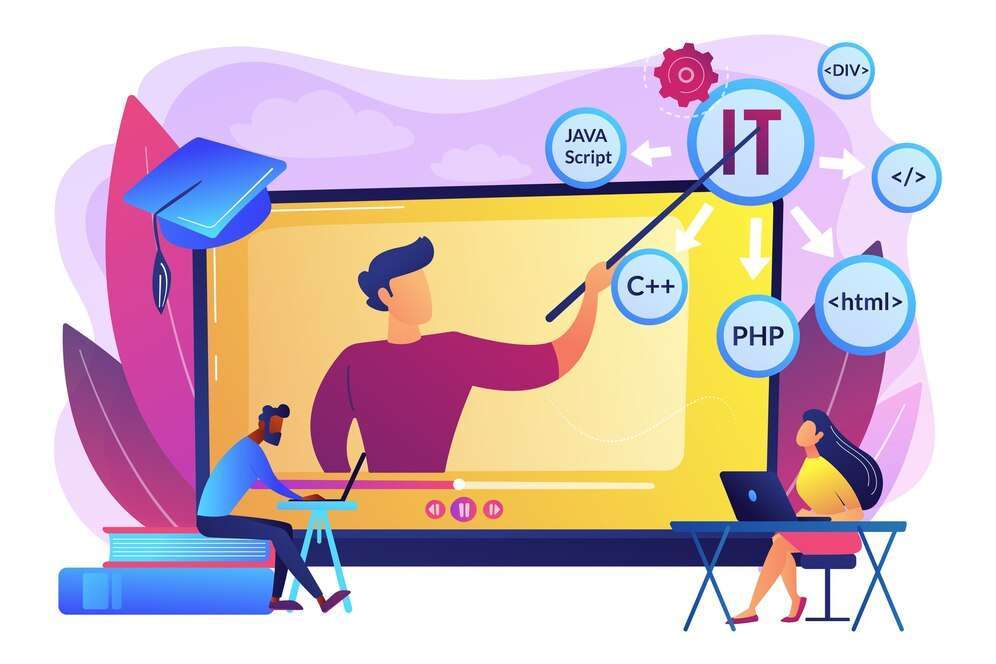
Apps for language learning are becoming more and more popular in this age of digital education. These applications give users the freedom to pick up new languages whenever and wherever they choose, at their own speed. The creation of these apps has grown to be a lucrative industry as companies and individuals look to overcome language hurdles. This article explains how working with a mobile app development company can help you develop a profitable language learning app.
Why Should I Purchase a Language-Learning App?
- Global Market Expanding: Experts anticipate that the language learning industry will reach a valuation of $10 billion by 2025.
- Adaptive Education: Applications provide tailored, interactive education that accommodates a wide range of learning preferences.
- Accessibility: By incorporating language learning into their everyday activities, users can learn while on the go.
Essential Components of a Language-Learning App
Your language learning app needs to include a few essential components in order to succeed: features that improve learning efficacy and the user experience.
1. User-Friendly Interface
- Simple Navigation: Its intuitive layouts and clear menus make it simple to navigate.
- Visually Appealing Design: An eye-catching, well-maintained design that increases user interaction.
2. Multilingual Support
- Varied Language Selections: To draw in a worldwide user base, provide a large selection of languages.
- Translation Resources: Integrated translation tools to facilitate multilingual content understanding.
3. Engaging Educational Programs
- Interactive Exercises: To make learning more enjoyable, use games, quizzes, and interactive exercises.
- Intelligent Feedback: Provide prompt feedback on activities to help users monitor their progress.
4. Speech Recognition
- Pronunciation Practice: Assist users with practicing pronunciation; this cutting-edge technology utilizes speech recognition.
- Voice Commands: Give users voice commands to perform actions and navigate the program.
5. Gamification
- Reward System: To encourage users, use badges, points, and accomplishments as a rewards system.
- Leaderboards: For a more engaging experience, let users compete with friends and other students.
6. Offline Access
- Downloadable Content: Permit users to save courses and resources for offline viewing.
- Syncing: Keep an eye out for device synchronization when using an online platform.
7. Social Integration
- Community Forums: Provide an area where users may communicate, exchange stories, and practice together.
- Social Sharing: Allow users to keep their social media accounts updated with their progress.
8. Integration of Payments
- Subscription Models: We offer multiple subscription levels to cater to the diverse needs of our users.
- In-App Purchases: Offer consumers the opportunity to buy extra content within the app.
The Development Process: A Comprehensive Guide

A language e-learning app must go through numerous stages of development, each of which is essential to making sure the finished product is both useful and functional. Working with a seasoned app development company in India can expedite this procedure.
1. Market Research
- Target Audience Analysis: Determine who your target audience is, as well as what their wants and preferences are.
- Competitor Analysis: Examine current applications to find areas of the market that could use improvement and market gaps.
2. Defining App Features
- Core Features: Ascertain the features that are crucial to making your app unique.
- Additional Features: Think about incorporating extra features that improve the user experience.
3. Picking the Appropriate Technology Stack
- Frontend Technologies: Select frontend technologies that provide a responsive and fluid user interface.
- Backend Technologies: To manage data and guarantee smooth operation, choose solid backend solutions.
4. Designing the User Interface
- Wireframes: Draw out the app's layout and structure using wireframes.
- Prototyping: To test the app's usability and functionality, create a prototype.
5. App Development
- Frontend Development: Put your attention into designing a user-friendly interface.
- Backend Development: Ensure safe and effective operation and data handling.
6. Testing
- Functionality Testing: Confirm that every feature functions as planned.
- Usability Testing: Verify how simple the application is to use and navigate.
- Performance Testing: Ensure a seamless user experience by testing the app's responsiveness and performance.
7. Launch
- App Store Submission: Upload the application to Google Play and the Apple App Store, among other big app shops.
- Promotional Initiatives: Using a variety of media, introduce your target audience to the app.
8. Post-Launch Support
- Regular Updates: Add new features and enhancements to the app as they become available.
- User Feedback: Collect user input and make the necessary changes to improve the application.
Why Should You Choose an Indian Mobile App Development Firm?
Due to a number of benefits that appeal to international companies, India has emerged as a top location for app development services.
1. Affordable Remedies
- Competitive Prices: Compared to Western nations, India's development expenses are notably cheaper.
- Excellent Output: Indian developers are renowned for producing apps of high caliber, even at a lesser cost.
2. Talented Labor
- Expert Developers: India has a sizable pool of talented developers who are multi-technique capable.
- Ongoing Education: Upskilling and keeping abreast of industry developments are priorities for Indian developers.
3. Timely Delivery
- Effective Project Management: Indian businesses are renowned for their ability to complete projects on schedule because of their use of efficient project management techniques.
- 24/7 Help: To accommodate customers in various time zones, a lot of Indian businesses provide round-the-clock assistance.
4. Customized Solutions
- Tailored Services: Indian app development companies offer customized solutions that meet their clients' needs.
- Adaptable Engagement Frameworks: Choose from hourly, fixed-price, or specialized teams, among other engagement models.
Case Studies: Promising Indian Language Learning Applications
1. App A: Transforming Language Instruction
| Client Requirement | The client demanded a multilingual, user-friendly app. |
| Solution | We added real-time feedback and gamification components to a feature-rich app. |
| Outcome | In the first half of the year, the app downloaded over a million times. |
2. App B: Providing Offline Learning to Users
| Client Requirement | The client requested an offline app with multiple language support. |
| Solution | We created an app that could download and synchronize content. |
| Outcome | A year later, the app's user retention percentage remained at 95%. |
Problems with Creating Language Learning Apps
There are unique difficulties involved in creating an app for language learning. Success depends on recognizing and overcoming these obstacles.
1. Content Localization
- Problem: Accurately translating multilingual content while preserving its original meaning.
- Solution: Collaborate with linguists and native speakers to achieve correct translations.
2. Speech Recognition Accuracy
- Problem: Speech recognition software must accurately understand a variety of dialects and accents.
- Solution: To increase accuracy, use large amounts of training data and sophisticated machine learning algorithms.
3. Data Security
- Problem: Safeguarding user information and maintaining confidentiality.
- Solution: Put strong encryption procedures and safe authentication techniques into practice.
How to Pick the Best Indian App Development Firm
Your project's success depends on your choice of app development business. Here are some pointers to aid with your decision-making.
1. Examine Their Portfolio
- Experience: Seek out businesses with a track record of creating language-learning applications.
- Case Studies: To learn about their strategy and success rate, go through their case studies.
2. Evaluate Their Technical Knowledge
- Technology Stack: Make sure the business is knowledgeable about the technologies needed for your project.
- Innovation: Select an organization that welcomes new trends and technology.
3. Examine Client References
- Excellent Testimonials: Seek out businesses with favorable feedback and endorsements from previous customers.
- Sources: To find out how satisfied past customers were, get references and talk to them.
4. After-Development Support
- Maintenance Services: Verify if the business provides continuous upkeep and assistance.
- Revise Procedures: Become familiar with their updates and bug-fixing policies.
Concluding Remarks
Developing a language-learning application is a significant task that requires meticulous planning and execution. You can use their experience to design a high-quality, reasonably priced solution that meets your objectives by working with a respectable app development firm in India. Your app can succeed in the cutthroat market and provide users with a useful tool for learning new languages if it has the features, development process, and ongoing support that it needs.
We to code. It's our passion










you can also reach us at our given
email address or phone number.




